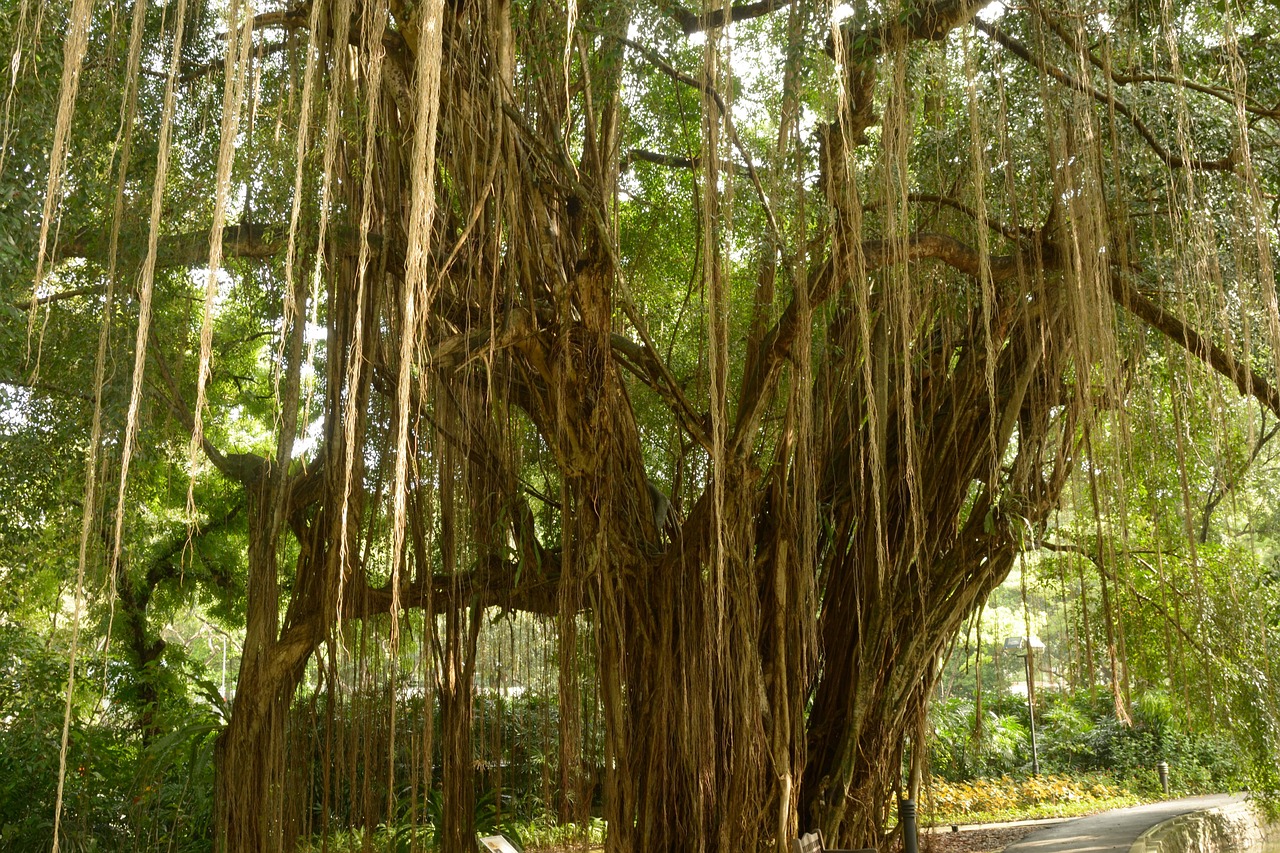The history of the banyan tree in Hawaii, albeit relatively brief, is full of interesting anecdotes and stories involving some of the most significant historical figures of the modern age.And although the banyan tree has become a common feature of Hawaii’s landscape, it is not native to the islands. Their canopies are vast, and seem to drip roots to the ground below. Kids love to swing from those roots, and to climb among nooks and crannies of intricately intertwined trunks.
The now-famous Lahaina Banyan, which was planted on Maui in April 1873, was the first of its kind in Hawaii. Native to India, the Lahaina Banyan was given to Maui Sherriff William Owen Smith by missionaries from India. He planted it to commemorate the 50th anniversary of the first Protestant mission to Lahaina. The Lahaina Banyan is now the oldest banyan in Hawaii, and one of the oldest in the United States.
The Lahaina Banyan has since grown to over 40 feet tall, with its canopy’s circumference spanning a quarter-mile. Although it has faced threats to its health, measures were taken to protect and preserve the tree in 2000. It remains home to hundreds of mynah birds, who fill the area with a chattering din each day at sunset.
Banyan Tree Drive in Hilo on the Big Island has dozens of stories of major historical figures visiting and planting a tree there. The trees were first planted in 1933 when city officials thought it would be a good idea to have celebrities in Hilo filming Cecil B. DeMille’s “Four Frightened People” plant trees in the area. The drive was built in 1934, prompted by a visit by President Franklin D. Roosevelt, who also planted a tree. Many other famous figures have their names on placards beneath the trees they planted. Amelia Earhart, Richard Nixon, and Louis Armstrong are among the honorees of Banyan Drive.
Because of Baynan Drive’s location on the Hilo coastline, some trees were lost to tsunamis that devastated Hilo. Remarkably, however, 50 of the expansive trees remain.
Near Kawela Bay on Oahu’s North Shore is a banyan tree that has gained more recent attention as a featured location on the cult-favorite “Lost” television show. But Oahu also is home to banyan trees of a weightier historical provenance. The banyan tree at Iolani Palace was a gift from Indian royalty to King Kalakaua, who began construction of the palace in 1882. It is believed that it was planted by Queen Lili’oukalani, who would ultimately be overthrown and imprisoned at the palace.
Another famous Oahu banyan tree is the majestic giant at the historic Moana Hotel on Waikiki Beach. Planted in 1904, the tree now reaches 75 feet high and 150 feet across. It is a dominating feature of Waikiki’s oldest hotel. Nearby, both inside and outside the Honolulu Zoo is a cluster of towering banyan trees, filled most days with almost as many giggling children as chirping birds. Along the popular Manoa Falls Hiking Trail is another large banyan tree, believed by some to be haunted, stand in a path taken by “Night Marchers,” or the spirits of fallen Hawaiian warriors.
Although the banyan is an alien species, it has managed to find a comfortable home in Hawaii, and is now woven into the fabric of modern Hawaii’s history and landscape. And they’re nice to look at.




